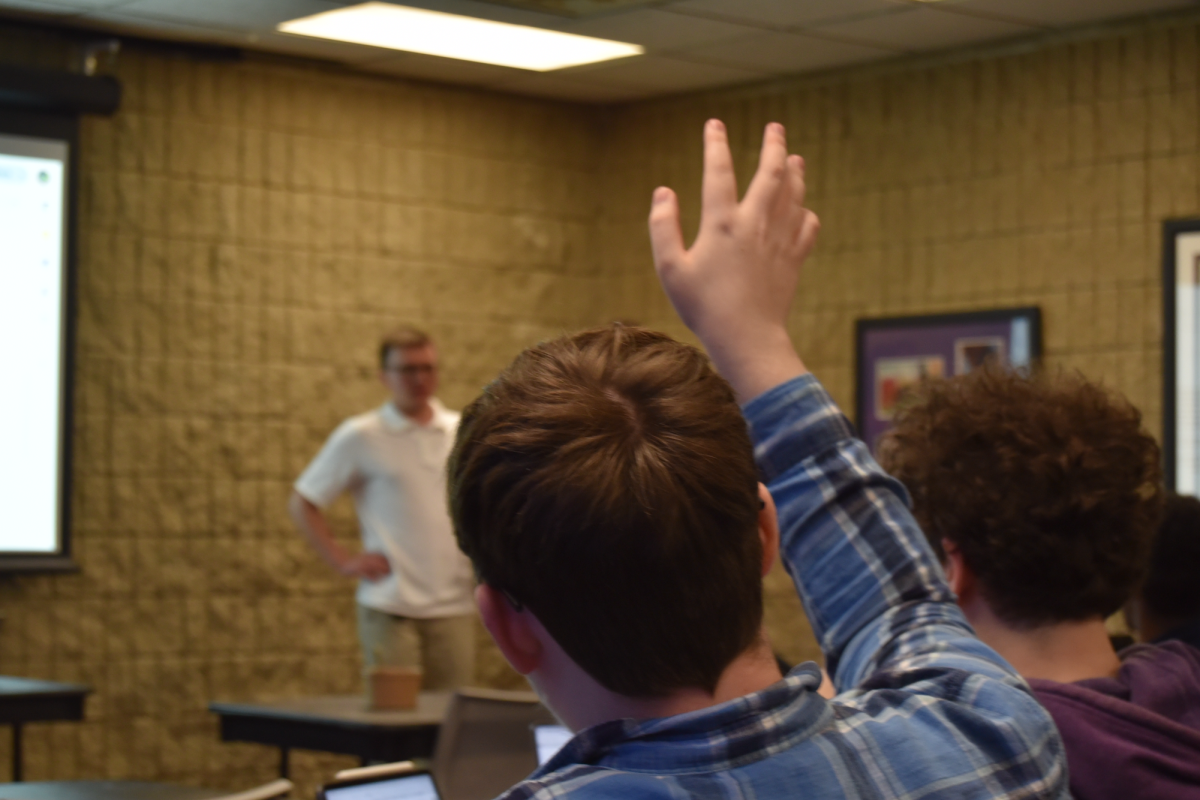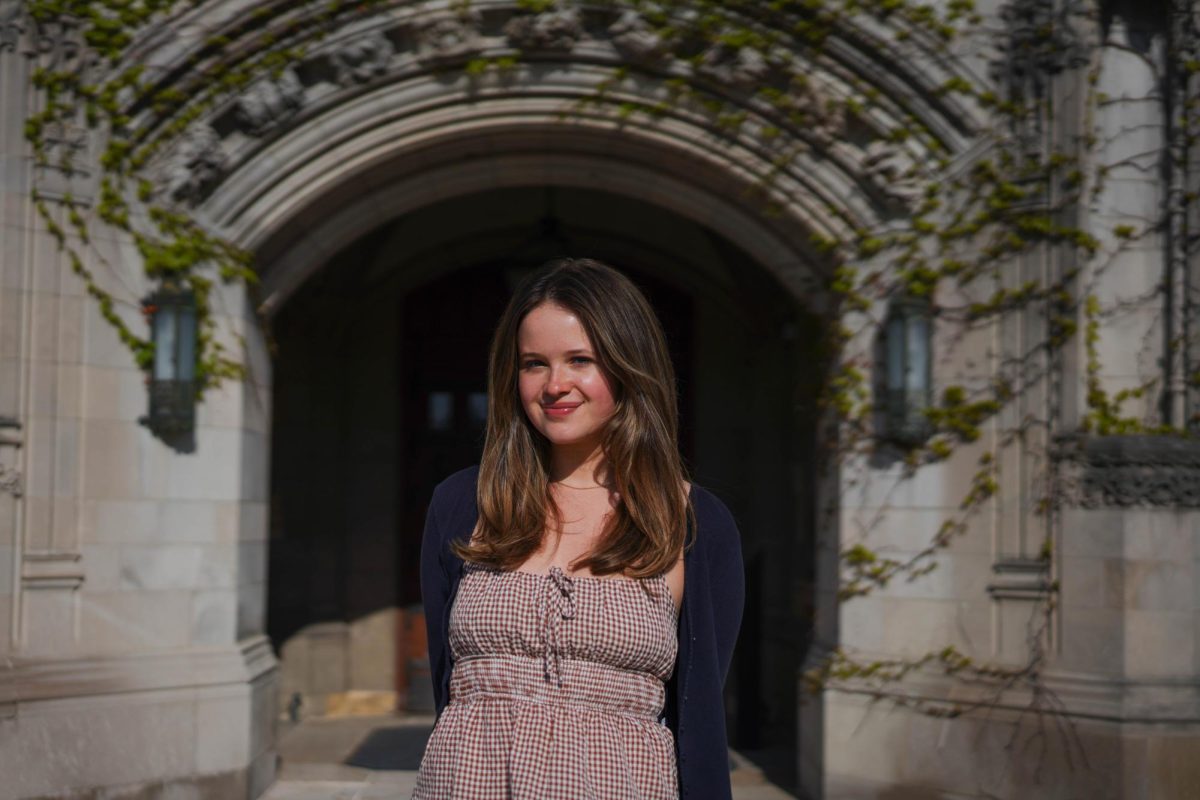Content warning: This story contains mentions of gun violence.
Sociology Prof. Andrew Papachristos has worked on community-based gun violence prevention in Chicago for more than 15 years.
Papachristos is a faculty fellow at Northwestern’s Institute for Policy Research and the faculty director for the Center for Neighborhood Engaged Research & Science, which he founded in 2018.
CORNERS works with community violence interventions workers to diffuse situations from within the community as well as to develop prevention strategies.
As part of his research in these communities, Papachristos develops network maps to track gun violence. His findings show that violence tends to cluster within small, interconnected groups. He has used network maps in cities across the country including Chicago, Boston and Oakland, California, to track gun violence incidents and create prevention plans.
The Daily talked to Papachristos to learn more about his approach to gun violence prevention research.
This interview has been edited for brevity and clarity.
The Daily: You’ve been studying gun violence and gun violence protection for more than two decades. How did you first become interested in that area of research?
Papachristos: I grew up in Chicago, and my family was impacted by gun violence. I was trying to figure out how I could do something about violence in the city, and I had worked with violence prevention groups, volunteering through churches, through nonprofits.
In college, I thought about teaching, but I took sociology and criminology classes and it started to explain things. It started to explain neighborhoods. It started to explain networks. I started doing research, and I realized that some research projects are very much tied to community and violence work.
I found my way into this research and academic space where it let me teach, but it also let me be connected and grounded in community research and thinking about how you do projects that have policy impact. But it all started just from being a kid from Rogers Park and seeing my family being impacted by it.
The Daily: Can you pinpoint when you started to realize that gun violence could be understood through social networks and community?
Papachristos: I understood how neighborhoods shape people’s experience, but the network idea came to me during graduate school when somebody I was working with asked me, ‘Who’s going to get shot next?’ I started taking all these paper case files and drawing diagrams by hand. And (then) there were these network maps. I thought I invented network analysis. I did not. It was a whole entire field of science, but I was new to it.
One of the key insights from this work is that violence concentrates in super small networks. There’s a small number of people who are picking up guns, who are engaged in conflicts that lead to shootings. These (network maps) let you get to that question of ‘Who’s going to get shot next?’
The Daily: How do you balance analyzing the quantitative data and making sure there’s also a human aspect of the projects CORNERS does?
Papachristos: The most significant questions should be coming from real life situations. Data and statistics and surveys and focus groups and all these other things should be in service of answering those sorts of questions. We start with our partnerships, a community organization, a civic partner, a government partner and we start digging into these questions: ‘Does this work?’ ‘How does this spill over?’
From design all the way through the process, we make sure we’re in constant contact, giving constant feedback. What we try not to do is to be purely extractive, which is a lot of traditional research. In the last week, I’ve been in Humboldt Park, I’ve been in Rogers Park, I’ve been in West Pullman, I’ve been in Little Village. My team and I are all over.
I think (community engagement) leads to better relationships. I think it leads to better practice, and I also think it leads to better research. I think it brings research questions that can get ‘high-level nerdy.’ We can talk about epistemology, diffusion models and Bayesian autoregressive trees, but we can also come back to who’s going to get shot.
The Daily: How do you see the issues differ from place to place?
Papachristos: When you’re thinking about differences in Chicago, race and place are very synonymous. Black communities and Latino communities have slightly different dynamics. For example, in Latino communities, there are larger organizational structures (that) are much stronger than they are in traditionally Black communities.
The fundamental principles around the concentration of violence and diffusion of violence look very similar. If they look similar in different sizes of cities, it means there are human dynamics that are driving behaviors. That’s the whole essence of network science: that the shape of your network affects the opinions you have, who you vote for, who you date, how you catch a disease. If we can understand that, fundamentally, as a human thing, it can help us with intervention and preventions.
The Daily: Have you found that it’s difficult to build trust in these communities?
Papachristos: The short answer is yeah. It’s hard because of the historical relationships between universities and communities. Many of these communities have been researched over and over and over again by the universities of the city, and usually (by) very extractive methods.
At CORNERS, we prioritize building relationships and building trust, which doesn’t mean just telling people what they want to hear. The only time you know whether the relationship happens is when the trust gets tested. Real relationships are not always straightforward. They’re tricky. We’ve made mistakes on reports. We have to go back and say, ‘We messed up.’ That really comes down to honesty and shoe leather. You got to be there.
Email: [email protected]
X: @BethkeTia
Related Stories:
— NU Prof. Rob Voigt quantifies racial disparities in news coverage on gun violence
— Local activists call for transparency, action in wake of gun violence study







